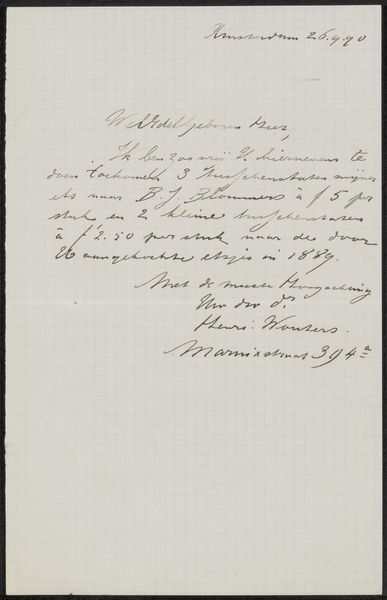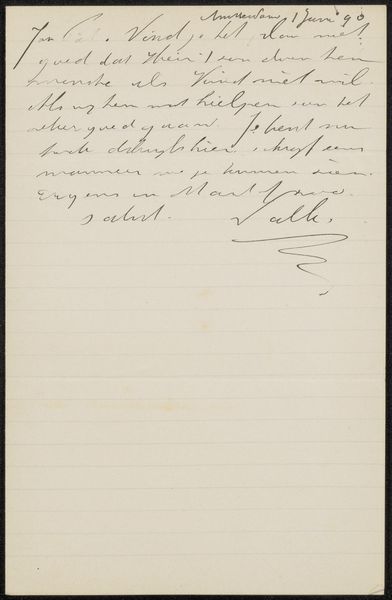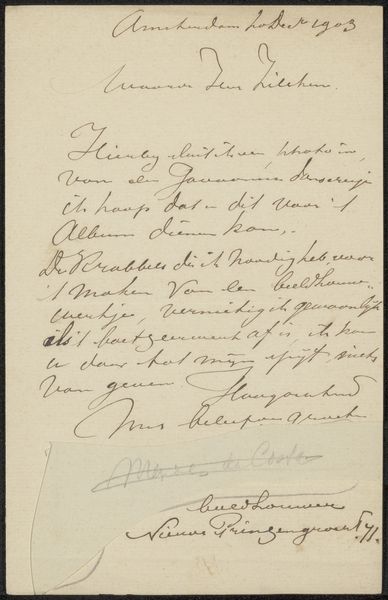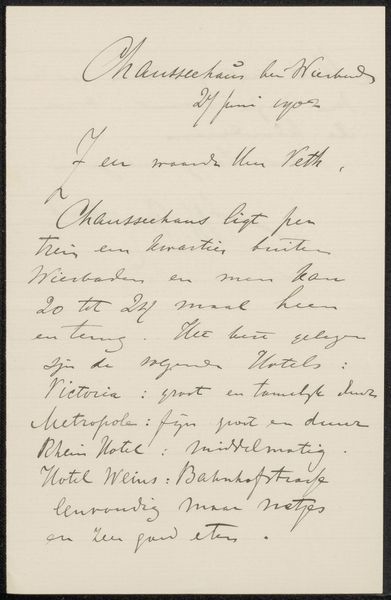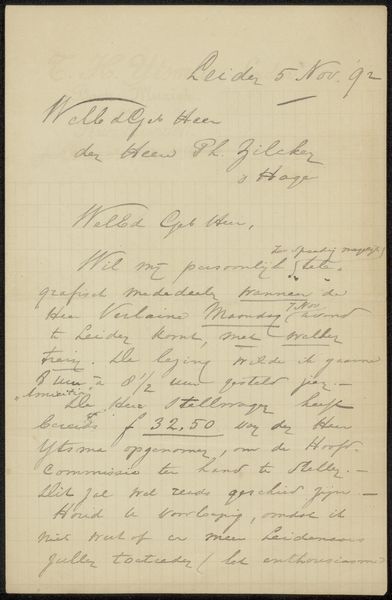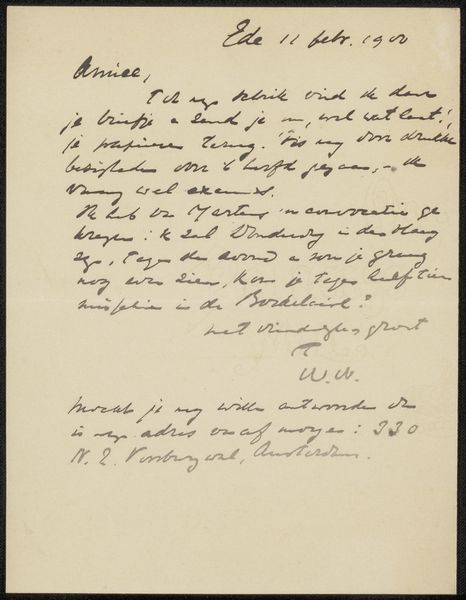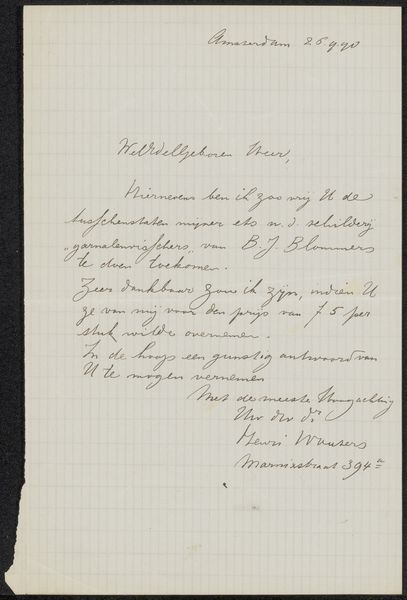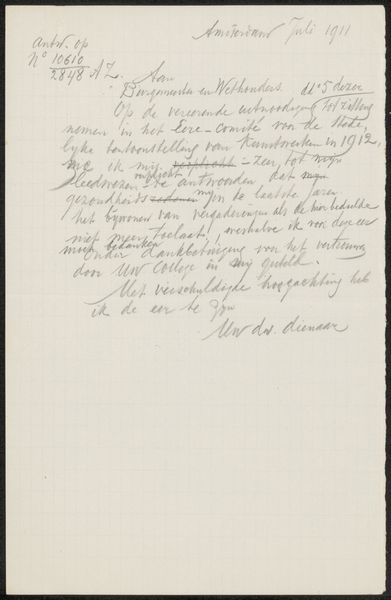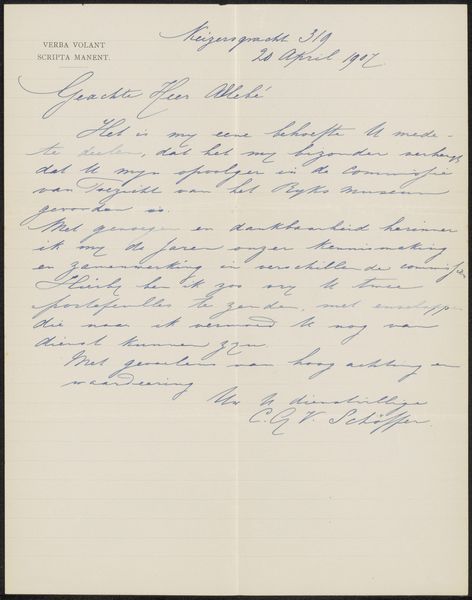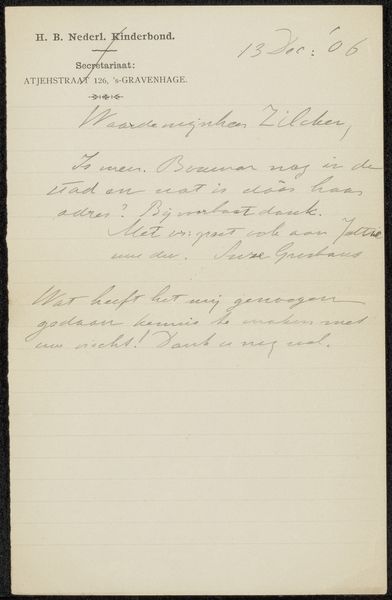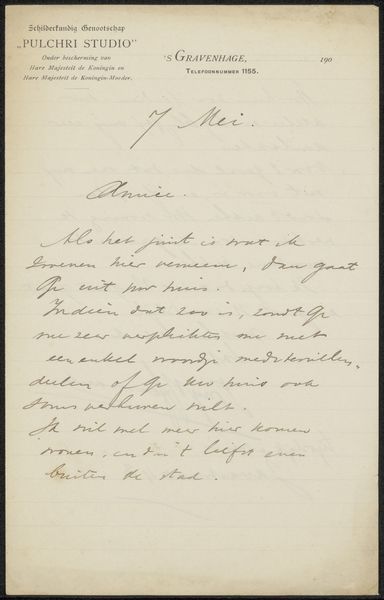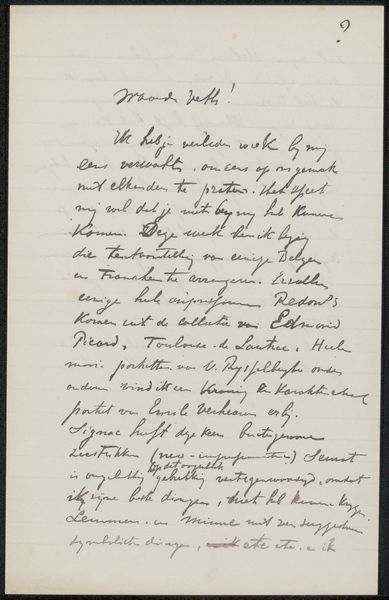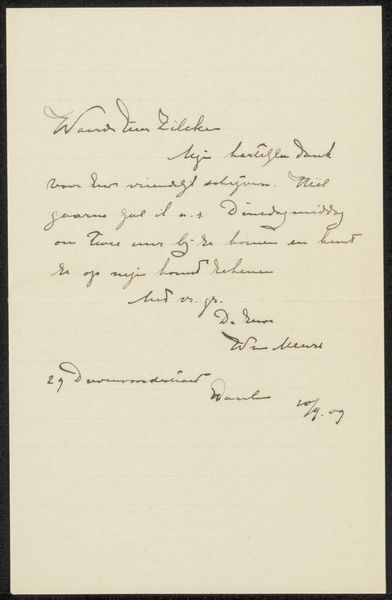
drawing, mixed-media, paper, ink, pen
#
drawing
#
mixed-media
#
paper
#
ink
#
pen
#
calligraphy
Copyright: Rijks Museum: Open Domain
Curator: Before us we have a document entitled "Kwitantie voor Alberto Caramelli," possibly dating to 1881, crafted by Wally Moes. It employs ink, pen and what is marked as "mixed-media" upon a paper support. What is your initial reading? Editor: The most striking thing is the script. It dances on the page, like an expressive drawing as much as a utilitarian document. The controlled loops and elegant pressure recall penmanship exercises or personal letter-writing, something precious. Curator: Yes, there’s a certain formal elegance. And in terms of symbols, what reads to me immediately is its testimony to a financial transaction. Look how the "f4.80" sits almost centrally – it grounds the aesthetic flourish to the reality of the artistic profession at that time. It also gives me access to consider how people actually purchased art in the period. Editor: Exactly! We're holding, quite literally, evidence of the commodification of art, and the very physical nature of an exchange, possibly the payment in installments between artist and patron. Look at the careful tally of two paintings described in the note: "Vrontotje aan het Strand" and "Vrond van L. Spinnemei." Even now it's almost hard to reconcile with a modern payment process: a handmade artifact about purchasing artifacts! What was the meaning of such images? And for what market were these produced? Curator: Considering your point about markets brings up interesting points about Dutch 19th-century art in particular. Beach scenes ("Vrontotje aan het Strand") were increasingly popular due to the expanding middle class, an imagery representing leisure, perhaps. While something from "L. Spinnemei" could invoke something more intimate and symbolic. How the artist captured that through ink, I'm keen to reflect upon! The whole page takes the quality of a sort of drawing with added data. Editor: So even this humble receipt resonates beyond the economic details. It offers a fascinating confluence of economics, materials, the history of aesthetics, labor and artistic production in this period. Curator: Yes, a wonderful reminder that meaning inheres everywhere, in every cultural scrap and vestige!
Comments
No comments
Be the first to comment and join the conversation on the ultimate creative platform.
